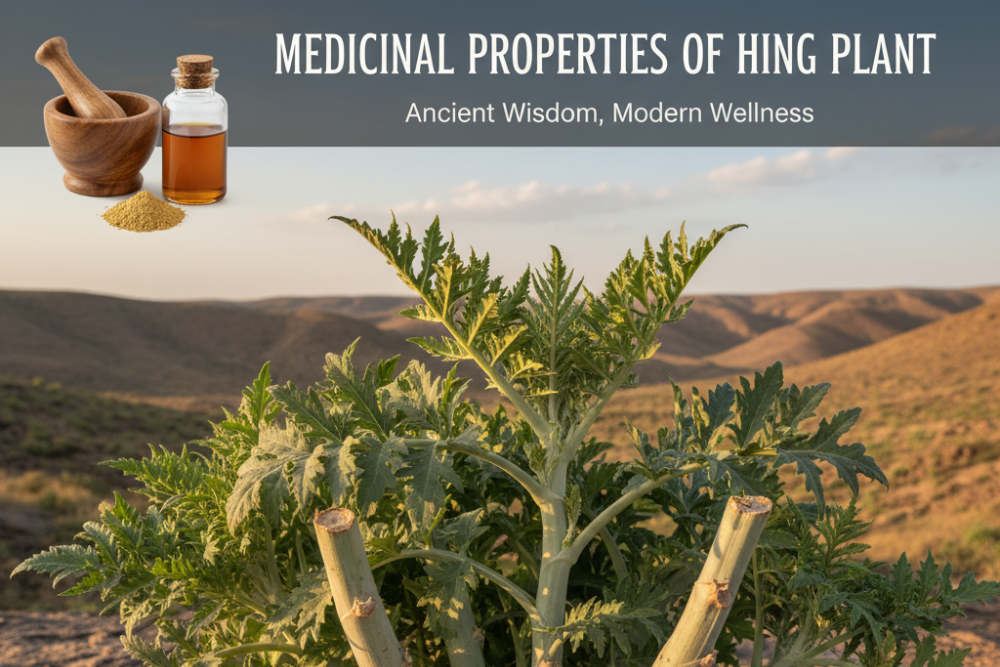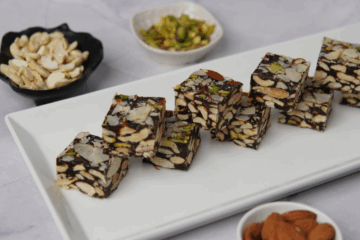The Hing plant, known scientifically as Ferula asafoetida, is far more than a kitchen spice. For centuries, Ayurveda has celebrated its wide-ranging medicinal benefits — from respiratory relief to mood enhancement. In this blog, let’s uncover the Medicinal Properties of the Hing Plant that often go unnoticed.
What are the lesser-known health benefits of hing — beyond digestion and bloating relief?
Short Answer (under 50 words):
Beyond aiding digestion, hing offers antimicrobial, anti-inflammatory, and antispasmodic properties. It helps in respiratory issues, menstrual pain, fatigue, and even mood regulation, making it a valuable Ayurvedic remedy.
Detailed Answer:
- Antimicrobial Action: Hing contains natural compounds that fight harmful bacteria and viruses, supporting immunity and gut health.
- Anti-inflammatory Benefits: Its active resins help reduce internal inflammation, beneficial for arthritis and chronic pain.
- Respiratory Health: Inhaling hing steam or using it in chest rubs can ease asthma, bronchitis, and nasal congestion.
- Menstrual Pain Relief: Hing’s antispasmodic nature relaxes uterine muscles, reducing cramps.
- Mood Balancer: Ayurveda describes hing as a satvic herb that stabilizes mood and reduces stress or anxiety.
Can I use hing as a natural remedy for colds, coughs, or infections — how do I prepare it safely?
Short Answer (under 50 words):
Yes, hing can be used safely as a home remedy for colds, coughs, and infections when prepared correctly — such as hing paste for chest rubs, hing water for sore throats, or hing steam for congestion.
Detailed Answer:
- Hing Paste for Chest Rubs: Mix a pinch of hing with warm coconut oil. Apply on the chest to relieve congestion and ease breathing.
- Hing Water for Sore Throat: Boil water with a pinch of hing and let it cool slightly. Gargle twice daily to reduce throat inflammation.
- Hing Steam Inhalation: Add a small amount of hing to hot water. Inhale the steam for 5–10 minutes to clear nasal passages and reduce sinus pressure.
- Hing Oil for Infections: Dilute hing with mustard oil and apply topically to minor cuts for its antiseptic properties.
Is there a difference between the hing plant and the powdered hing I use in cooking — which one has more medicinal value?
Short Answer (under 50 words):
Yes, powdered hing is derived from the resin of the hing plant. Both have medicinal value, but the pure plant resin is more potent, while the commercial powder often includes additives that dilute its strength.
Detailed Answer:
| Form | Description | Medicinal Potency |
|---|---|---|
| Hing Plant Resin | Natural gum-like resin extracted directly from the plant roots. | High — contains maximum concentration of bioactive compounds. |
| Powdered Hing | Processed and mixed with rice flour or gum arabic for easy use in cooking. | Moderate — diluted form suitable for daily consumption. |
To retain medicinal benefits, always choose pure or organic hing varieties that are free from fillers and artificial additives.
Are there any Ayurvedic remedies using hing for chronic issues like IBS, menstrual cramps, or fatigue?
Short Answer (under 50 words):
Ayurveda uses hing in several remedies for IBS, menstrual cramps, and fatigue — such as hing-ajwain decoctions, hing-infused oils for abdominal massages, and hing water for improving digestion and energy.
Detailed Answer:
- Hing-Ajwain Decoction for IBS: Boil 1 tsp ajwain with a pinch of hing in water. Drink warm to reduce bloating, cramps, and irregular bowel movements.
- Hing-Infused Oil for Abdominal Massage: Mix hing in warm sesame oil and gently massage the lower abdomen to ease menstrual pain.
- Hing Water for Fatigue: Add a pinch of hing to lukewarm water and drink daily in the morning to enhance digestion and energy.
- Hing with Black Salt: Combine hing and black salt in warm water for quick gas relief.
These Ayurvedic applications of hing work best when paired with a balanced diet and regular lifestyle routines as suggested in traditional wellness texts.
Is hing safe for everyone — are there any side effects or people who should avoid it?
Short Answer (under 50 words):
Hing is generally safe in small amounts, but excessive use may cause side effects. People with low blood pressure, sensitive stomachs, or pregnant women should use it cautiously or consult an Ayurvedic expert.
Detailed Answer:
- Recommended Dosage: Only a pinch (around 200–300 mg) per meal is sufficient for health benefits.
- Possible Side Effects: Overuse may lead to headaches, nausea, or stomach irritation.
- Low Blood Pressure Warning: Hing can lower blood pressure slightly, so those already on medication should consult a doctor.
- Pregnancy Caution: Large doses might stimulate uterine contractions; hence pregnant women should avoid medicinal quantities.
- Allergic Reactions: Rare but possible — test small quantities before regular use.
Conclusion
The Medicinal Properties of the Hing Plant extend far beyond its culinary role. From relieving digestive troubles to supporting respiratory and hormonal health, hing remains a timeless Ayurvedic treasure. However, moderation and purity are key — always opt for authentic hing and use it mindfully to unlock its natural healing power.





